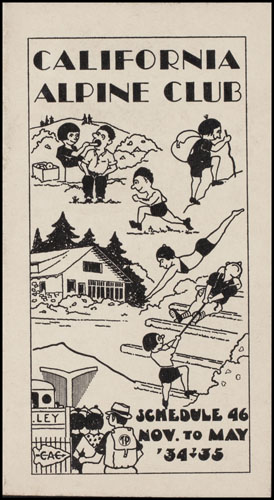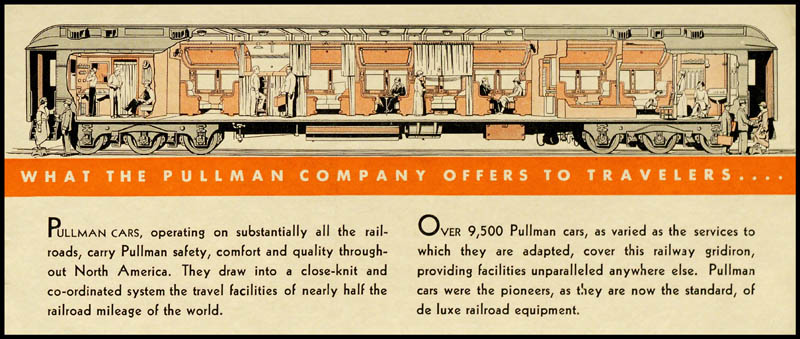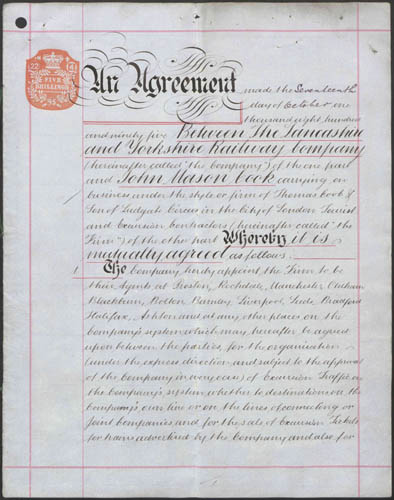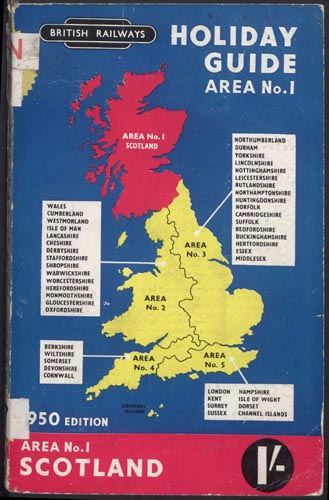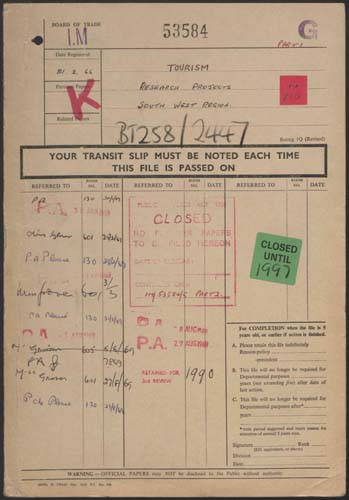Nature and Scope
“Leisure, Travel & Mass Culture: The History of Tourism is like the researcher's well-travelled, overstuffed suitcase of yesteryear. But instead of a jumble of notes and photocopies, the wide-ranging sources from archives around the world are neatly organized, readily accessible, and far more affordable to access.” Dr Anthony Stanonis, Queen's University, Belfast
"The history of tourism is the story of the modern world and students always relate to it whether as part of a world history survey or as a stand-alone course. This resource takes them even further into the subject, allowing encounters with previously hard to find first hand accounts of early travel, advertising, and even the records of one of the first and most important package tour companies, Thomas Cook. I always ask my undergraduates to do primary research in my tourism course, but they're limited by an inability to travel to major archives. This collection brings the archive to them." Professor Eric G. E. Zuelow, University of New England
"Much like a meticulously crafted tourist scrapbook, Leisure, Travel & Mass Culture: The History of Tourism brings together a rich collage of tourist ephemera, promotional material, visual imagery, memorabilia and tourist accounts. Unlike many other archival collections, which favor either supply side sources or individual perspectives, the array of materials made available integrate a broad spectrum of documents detailing the tourist industry as well as the tourist experience. This is a rare resource that opens up new kinds of historical evidence while providing opportunities to juxtapose and interpret historical sources in new ways. Perusing this archive is like taking a tour into history; it opens up an imaginative journey, allowing students and scholars to explore the complex interconnections between the staged tourist experience and the tourists’ response." Professor Marguerite S. Shaffer, Miami University, Ohio
Leisure, Travel & Mass Culture: The History of Tourism provides an in-depth look at the evolution of British and American working class tourism from c.1850 to 1980.
With every continent represented, the resource gives a broad overview of the destinations unlocked for the average traveller throughout this period, along with specific case studies on pivotal geographical areas, organisations, subjects and travel agencies important for the history of tourism.
Available online for the first time, material from the Thomas Cook Archives allows researchers to discover the history of the world’s oldest travel agency and chart the growth of a major pioneer of package tourism. Periodicals such as the Excursionist magazine, personal accounts from travellers on early Cook’s tours, photographs, advertising brochures, guidebooks, posters and ephemeral items provide a wealth of research material for study.
Every document has been indexed by one or more key themes for ease of navigation. This allows investigation into diverse subjects, such as:
- The evolution of educational travel, particularly in relation to the Polytechnic Touring Association (later Lunn Poly)
- The popularity of outdoor activities, wilderness travel and the environmental impacts of tourism
- The role of travel agencies, including Thomas Cook, Raymond Whitcomb Travel and the Anspach Travel Bureau
- Portrayals of race, particularly within the American south
- The technological advances which played an integral part in the growth of the tourism industry.
Key locations for American and British leisure travel during this period have been highlighted. Important collections on the White Mountains and Yosemite National Park discuss wilderness travel, whilst comprehensive studies of Florida, Coney Island and Blackpool trace the development of crucial seaside resorts. Guidebooks, scrapbooks and travel journals also present the evolution of New Orleans as a key southern vacation city.
To provide context on how imperialism and Empire shaped the growth of this unique industry, guidebooks and handwritten travel journals are also included from the late eighteenth century onwards.
Highlights for each collection are explained in further detail in the Collection Highlights section below.
For further information on the development of tourism and the factors which affected it, see the Leisure, Travel & Mass Culture: The History of Tourism chronology.
Unique primary sources cover the following themes: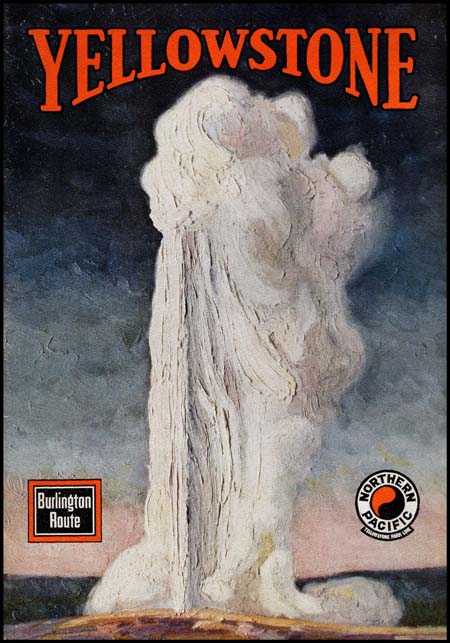
- Sport, recreation and wilderness travel in The Great Outdoors
- The growth of affordable Road, Rail and Air Travel
- Thomas Cook, the Polytechnic Touring Association and the growth of Package Tours, Cruises and Organised Travel
- The rise in popularity of beach vacations in Beachfront: Seaside and Coastal Destinations
- Accounts of Historical, Cultural or Religious Tourism
- Nineteenth and early twentieth century Health and Medical Travel
- Tourism as a tool for International Relations
- The lure of Urban Tours and City Breaks
- The evolution of Accommodation, Hospitality and Entertainment for the tourism industry
- Planning and Business – itineraries, timetables and travel agency correspondence
- Changing relationships between Women and Tourism
- Children and Families on vacation.
Other topics explored through Leisure, Travel & Mass Culture: The History of Tourism include:
- The relationship between race and tourism, including how African American and American Indian populations were used to advertise tourism and how they were perceived by the tourists themselves. Read further information on this subject in Anthony Stanonis' essay Travel Chronicles: Tourism, Memory and the Emergence of Modern America
- The use of tourism literature to control international image, particularly by fascist regimes such as the Nazi Party during the 1930s
- The relationship between tourists and the environment in National Parks such as Yosemite, Yellowstone and the White Mountains. Read further information in Professor Marguerite S. Shaffer's essay Next Stop Wonderland: Packaging Wilderness as a Tourist Destination.
Documents digitised in full colour from 15 archives and libraries include:
- Promotional films from the Camping and Caravanning Club, Thomas Cook and the Polytechnic Touring Association
- Eyewitness travel journals, many from the early nineteenth century, describing the sights and sounds of leisure travel
- Travel agency and organisational periodicals such as Thomas Cook's Excursionist and Camping: The Official Organ of the Camping Club of Great Britain and Ireland
- Brochures and leaflets advertising destinations, tours and activities
- Handwritten correspondence from individuals on vacation
- Luggage tags, stickers, tickets, coupons, menus, tariff lists, timetables and other ephemeral items
- Financial and company records from travel agencies and organisations involved with the tourism industry
- UK Government records discussing the British tourism industry and encouraging growth from international tourism
- Guidebooks and printed books discussing destinations throughout the world
- Maps showing many different countries and locations
- Photographs, postcards and posters from key destinations such as Blackpool
- Scrapbooks collecting personal memories and experiences.
Interactive and secondary teaching aids:
- Interactive world map enables quick and easy searches by region, country and US state
- Interactive chronology charting the history of tourism through the ages
- The Business of Travel, an A-Z biographical list of the major businesses and organisations found within Leisure, Travel & Mass Culture: The History of Tourism
- Contextual essays written by leading academics and collection specialists
- Fully searchable image gallery showing highlights from Leisure, Travel & Mass Culture: The History of Tourism, including photographs, postcards, illustrations and maps which can be filtered by key themes
- Separate map gallery for easy access
- Read first-hand accounts of fascinating journeys in Eyewitness Travels
- Carefully selected external links to aid research
- Search directories providing useful keywords, countries and states found within Leisure, Travel & Mass Culture: The History of Tourism.
Language and Terminology
Every care and attention has been paid to preserve the historic authenticity of these documents which range widely in date from the late eighteenth century to the late twentieth century. Any terminology that may be deemed discriminatory or offensive by present-day principles may have been preserved for the historic accuracy and relevance to that particular document.
Collection Highlights
Blackpool Central Library Local History Centre
The Camping and Caravanning Club Archive
John W. Hartman Center for Sales, Advertising & Marketing History, Duke University
George A. Smathers Libraries, University of Florida
J. Edgar & Louise S. Monroe Library, Loyola University New Orleans
Massachusetts Historical Society
Michigan State University Libraries
New Hampshire Historical Society
The New York Academy of Medicine Library
University of Westminster Archive
Blackpool Central Library Local History Centre
Material sourced from Blackpool Central Library Local History Centre captures the magic of one of Britain’s most iconic seaside destinations. Three unique areas are featured: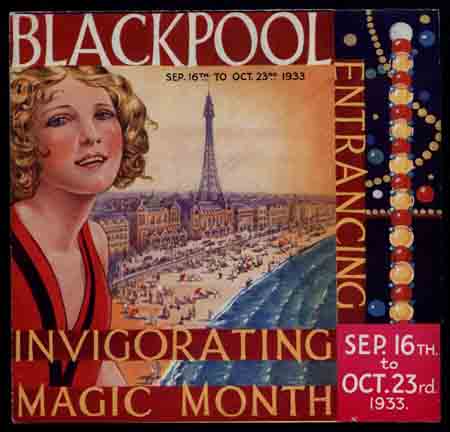
- Promotional literature produced by the Council to help support Blackpool as a holiday destination, including documents from 1924 onwards covering the famous Blackpool Illuminations
- Printed guidebooks and holiday guides for Blackpool from the earliest example held by the Local History Centre; A Description of Blackpool, in Lancashire, Frequented for Sea-bathing (1789), through to glossy guides from 1959
- Photographs, postcards and ephemera from the Cyril Critchlow Collection. Cyril Critchlow was a noted local theatre manager and magician who collected material about Blackpool entertainment and leisure throughout his lifetime. The selection includes items on Blackpool beach, the swimming baths, Blackpool Tower and its entertainments (including the circus, ballroom and ‘midget town’), the promenade and the Winter Gardens.
For further information about Blackpool, see the Blackpool Online Exhibition.
The selection from Brooklyn Historical Society provides case studies for Coney Island, Long Island and Rockaway Beach; three crucial coastal resorts for New York City dwellers from around 1840 onwards. Highlights include:
- Mid-nineteenth century maps of Coney Island and the surrounding area showing the changing land use, such as Map of Part of Coney Island, as Surveyed for the Quarantine Commission
- Selections from the Terhune and Wyckoff Family Papers, 1747-1932 relating to the building and running of Coney Island House, one of the first developments in the area and an early example of marketing Coney Island as a resort destination
- Annual reports of the Working Women’s Vacation Society (1889-1890) from the Brooklyn Charitable Organizations for Working Women Collection, 1855-1933. The society rented properties in New Jersey and Rockaway to working women to provide “summer rest and pleasure to weary, worn-out women.”
For further information about Coney Island, see the Coney Island Online Exhibition.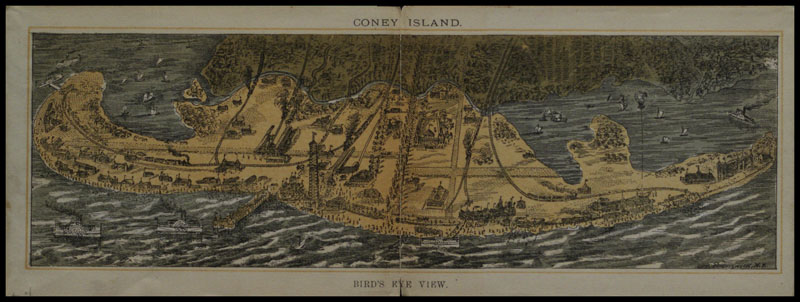
Yosemite is an iconic American tourist destination with scenic hiking trails, famous camping spots and spectacular redwood forests. Pamphlets, guidebooks, photographs and ephemera from California Historical Society provide a case study for researchers interested in wilderness tourism, conservation issues and the impact of tourism on the natural environment. Highlights include:
- Yosemite Valley Romance. Part guidebook, part romance novel, this 1911 book follows the exploits of two tourists who meet on a bus as they travel through Yosemite
- California Alpine Club Newsletters, 1916-1941. The California Alpine Club is Yosemite’s equivalent of the Appalachian Mountain Club in the White Mountains. The newsletters include details of forthcoming hiking excursions and provide advice to wilderness tourists
- Three Hoboes in Yosemite. Photograph album of Alfred Ghirardelli and his two brothers on their ‘rite of passage’ ramble through Yosemite
- American Traveler's Guide to Negro History (1964) which acts as a guide to locations important to the African American community not generally considered traditional tourist destinations.
The Camping and Caravanning Club Archive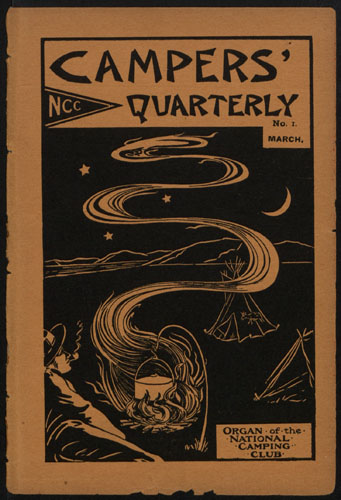
Founded by Thomas Hiram Holding in 1901, the Camping and Caravanning Club has provided expertise, advice and safe camp sites across the globe for over 100 years. It is the world’s largest and oldest camping club, with notable presidents including Sir Robert Baden-Powell and Antarctic explorer Captain Scott. Highlights include:
- Runs of the official club periodical, 1906-1960, Cycle Camping; Camping: The Official Organ of the Camping Club of Great Britain and Ireland and Camping and Outdoor Life
- Fabric pennons from various camp sites across the UK, many of which celebrate the National Feast of Lanterns
- Promotional tourism films including silent film With Tent and Rucksack (1938) and Camping Carefree (1976).
John W. Hartman Center for Sales, Advertising & Marketing History, Duke University
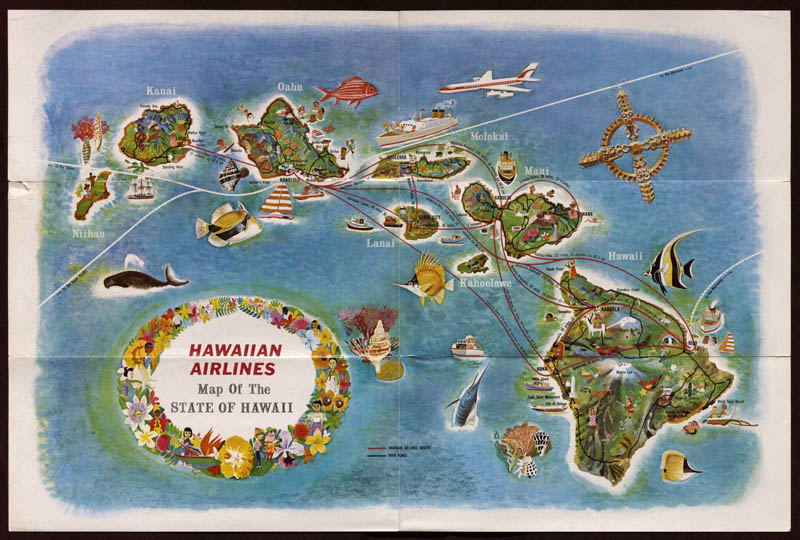 The Anspach Travel Bureau Collection of Tourism Literature spans the years 1942 to 2000, with the bulk of material dating from 1960 to 1980. The company was founded in 1932 by brothers' Herman and Robert Anspach in Highland Park, Illinois and specialised in providing upscale travel and vacations across the globe. It operates today as the Chicago-area branch of Valerie Wilson Travel, Inc.
The Anspach Travel Bureau Collection of Tourism Literature spans the years 1942 to 2000, with the bulk of material dating from 1960 to 1980. The company was founded in 1932 by brothers' Herman and Robert Anspach in Highland Park, Illinois and specialised in providing upscale travel and vacations across the globe. It operates today as the Chicago-area branch of Valerie Wilson Travel, Inc.
Included in Leisure, Travel & Mass Culture: The History of Tourism are brochures, leaflets and other direct marketing materials disseminated by the Anspach Travel Bureau advertising resorts, hotels, airlines, cruise lines and other services.
The collection discusses tourist destinations spanning several decades, as well as from every continent.
University of Florida, George A. Smathers Libraries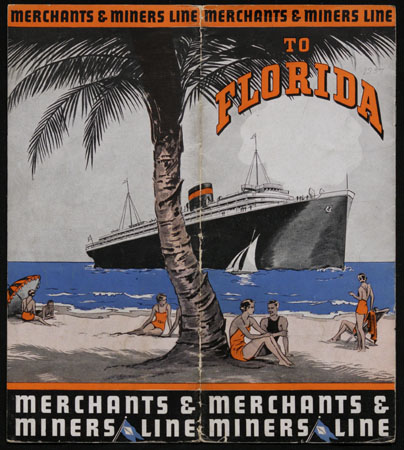
Leaflets from the Florida Ephemera Collection record the changing ways in which Florida has been marketed to tourists since the late nineteenth century and provide an extensive in-depth case study for Leisure, Travel & Mass Culture: The History of Tourism.
Early examples show Florida advertised as a genteel destination, with illustrations often depicting glamorous women enjoying luxury hotels, or men undertaking typically upper class sporting pursuits.
The emphasis shifts in the mid-twentieth century to catching ‘Winter Sun’, with coastal locations such as Miami Beach becoming popular.
Marketing also blurs the lines between tourism and settlement, actively encouraging Americans from more northern states to resettle in the area.
J. Edgar & Louise S. Monroe Library, Loyola University New Orleans
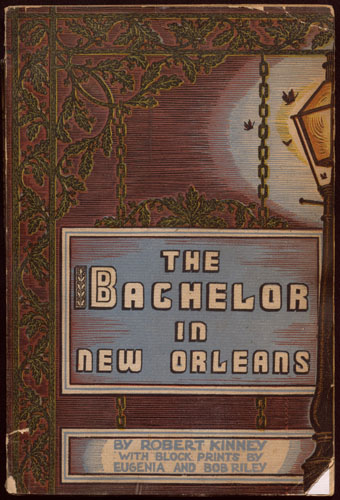 New Orleans emerged as a vacation destination following the Civil War and quickly embodied the romantic ‘Old South’ image with its iconic French quarter, grand cityscapes and ornate buildings.
New Orleans emerged as a vacation destination following the Civil War and quickly embodied the romantic ‘Old South’ image with its iconic French quarter, grand cityscapes and ornate buildings.
The creation of Storyville as a red-light district in 1897 also meant that New Orleans was often regarded as a rather risqué destination for young men looking for a good time.
Selections from the Anthony J. Stanonis Collection of New Orleans Tourism Ephemera and Anthony Stanonis Travel Scrapbook and Diary Collection provide an in-depth case study of this iconic city.
Guidebooks, periodicals and sightseeing brochures from 1900 to c.1970 make available research material on the changing nature of tourism marketing, whilst diaries and scrapbooks from 1885 onwards provide interesting sources for studying issues of race and tourism in the American south.
Read further information on this subject in Anthony Stanonis' essay Travel Chronicles: Tourism, Memory and the Emergence of Modern America.
Massachusetts Historical Society
As transportation improved during the nineteenth century, Americans fashioned their own version of the European ‘Grand Tour’, with excursions typically taking in the Hudson River, Erie Canal, Saratoga Springs, Niagara Falls and the White Mountains in New Hampshire.
The collection sourced from Massachusetts Historical Society includes handwritten accounts of early nineteenth century leisure travel on the east coast of America and presents the authentic traveller experience along these Grand Tour routes. Highlights include: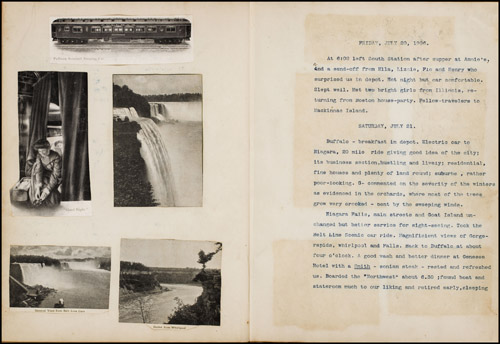
- Travel journal kept by George W. and Florence N. Claflin of Holliston, Massachusetts in 1906 describing their railroad trip through 17 states and parts of Canada. The journey encompasses a huge range of tourist attractions, including Yellowstone National Park and provides accounts of tourist lodges, grand hotels and railway travel.
- Ernest Ripley Spaulding (1929-1930) journal written whilst on an automobile trip from Boston to San Diego, California and back. This provides an early example of the classic American road trip.
- Record of a journey by James Murray Forbes (1903), in the Black Hawk private railroad car from Burlington, Iowa through the Grand Canyon; Santa Barbara; San Francisco; El Paso; Mexico City; Albuquerque and back to Burlington. Read further details in the Eyewitness Travel feature.
Michigan State University Libraries
The Travel Guide and Ephemera Collection from Michigan State University spans the period 1870-1970. Leaflets, guidebooks, illustrated view books and stereographs provide an overview of tourism within the US and chart how international destinations were advertised to the American market across the period.
International in focus, the collection includes many foreign language pamphlets, including French, German, Japanese and Italian and provides examples of both German and Italian fascist propaganda from the 1930s aimed at promoting tourism under the Nazi regime and Mussolini's dictatorship.
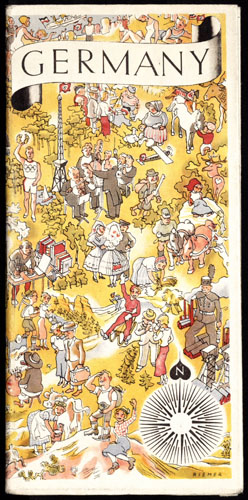
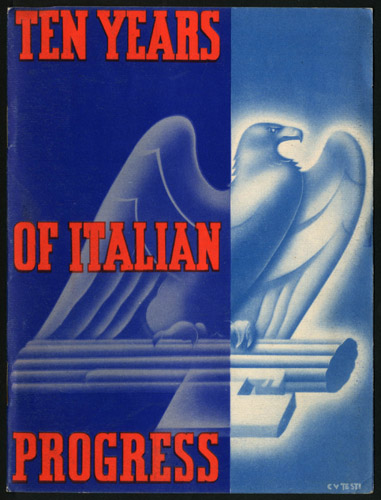
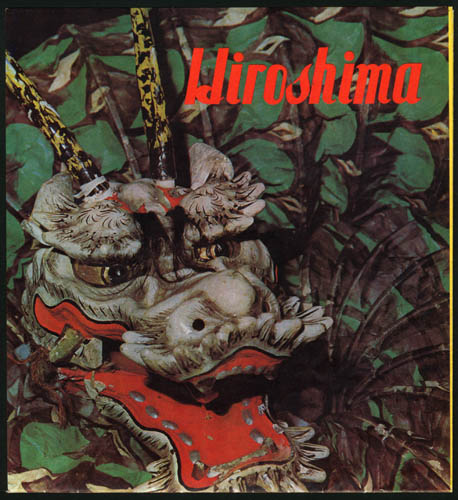
New Hampshire Historical Society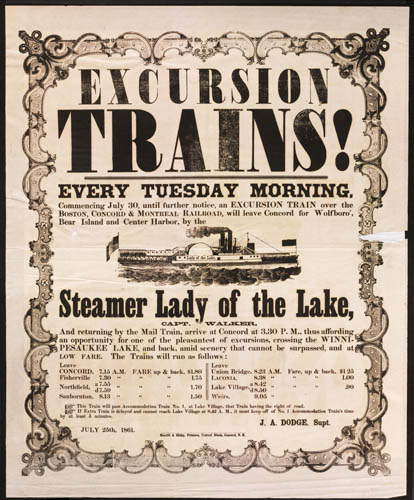
Providing an in-depth case study on the White Mountain region of New Hampshire, the material sourced from New Hampshire Historical Society offers a direct companion to collections on Yosemite and Yellowstone from California Historical Society and allows for detailed analysis of wilderness tourism and the environmental impacts of tourist activities.
The White Mountains – with the iconic Cog Railway, Old Man of the Mountain rock formation and Franconia Notch – are synonymous with late nineteenth century recreation and pleasure-seeking and represent an iconic destination for American tourists. The region is well known for its large nineteenth century pleasure palaces and retreats (Grande Dame hotels) and the selected material includes guidebooks, souvenir view books, hotel leaflets and handwritten travel journals. Highlights include:
- "The Excursion." Not Words-worth, but Deeds-worth. A humorous account of the trip of three ladies, Mrs Ray, Mrs Dee and Miss Bee, through the White Mountains during 1884.
- Brier Rose Cottage Guest Book. The register covers the years 1886-1914 and lists guests, information about the weather, excursions and events. It becomes an extended travel diary with multiple contributors and provides an unusual way of tracing how tourist interactions within the region changed.
The main focus of material sourced from the Newberry Library is domestic travel within the US by automobile and railroad. The collection includes advertising material from the Chicago, Burlington and Quincy Railroad Company Archive, Pullman Company Archive and the Conoco Travel Bureau Touraide guides produced in conjunction with Rand McNally.
International destinations are represented through guides from Raymond Whitcomb Travel and handwritten accounts, including the key Frances Wells Shaw Papers. Highlights include:
- Frances Wells Shaw Papers, 1866-1976. Frances was born in Chicago in 1872 and married one of Chicago’s leading architects, Howard Van Doren Shaw. The couple travelled extensively throughout the US, Europe and the world and Frances recorded her unique experiences through handwritten journals and annotated travel leaflets. This is a key collection at the Newberry Library for the study of tourism.
- Raymond Whitcomb Travel Catalogues. Walter Raymond and Irving Whitcomb established the Raymond Whitcomb travel agency in Boston in 1879. It catered to a fairly wealthy audience who wanted accompanied, all-expenses paid travel and offered a service similar to that established by Thomas Cook during the same period. These travel catalogues provide detailed descriptions of tour itineraries and services and also include general travel advice on what to pack, what to wear and how to catch trains.
- Chicago, Burlington and Quincy Railroad Company Archive. Operating in the Midwestern United States from 1849-1970, ‘The Burlington Route’ served Colorado, Illinois, Iowa, Kentucky, Missouri, Montana, Nebraska, Wisconsin, Wyoming, New Mexico and Texas. Material from this collection looks specifically at advertising for the tourism market.
- Pullman Company Archive. Founded by George Pullman in 1862, the company manufactured luxury sleeping cars which featured carpets, curtains, upholstered chairs, libraries and fold-down bunk beds. These new railway cars revolutionised train travel in America and allowed long distances to be covered in great comfort. A significant proportion of the Pullman Company’s market were holidaymakers and the company directly advertised to tourists and leisure travellers. Material from this collection includes promotional leaflets catering for the American tourist.
The New York Academy of Medicine Library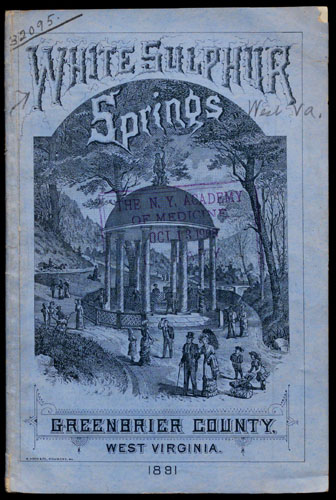
Focusing on travel for health and medical benefits during the mid- to late-nineteenth century, material sourced from the New York Academy of Medicine Library appeals directly to leisure-seeking tourists whilst advertising genuine medical services.
These new ‘Health Spas’ became key US tourist destinations and the line quickly blurred between medical necessity and popular leisure pursuit, with hydrotherapy becoming an important concept in American medicine from the 1840s onwards.
Saratoga Springs is one of the most famous of these historic American hydrotherapy resorts, with other examples including Glen Springs and White Sulphur Springs.
All the resorts selected advertise traditional activities such as golf, shooting, walking and dances alongside information on the treatments available for guests.
Available digitally for the first time, the Thomas Cook Archives is the largest contributor of material to Leisure, Travel & Mass Culture: The History of Tourism and has a very broad international appeal. The collection provides a unique opportunity to discover the history of the world’s oldest travel agency and to research how this unique organisation shaped the development of tourism history.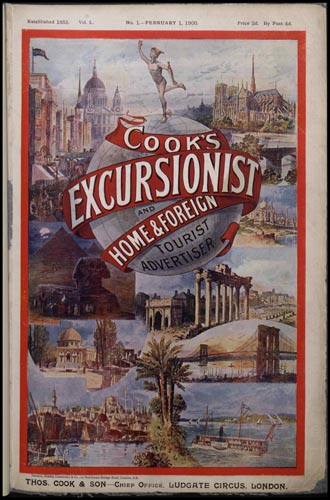
Material spans 1845 to 1969 and includes brochures, guidebooks, passenger lists, handbills, posters, handwritten travel journals, ephemera, film and periodicals. Early material focuses on British rail excursions and European tours before branching out to destinations in the Middle East, including Egypt and Palestine, and later, worldwide travel. Highlights include:
- Periodicals, including The Excursionist (1851-1902), Traveller’s Gazette (1920-1929), American Excursionist (1873-1890) and the American Traveler’s Gazette (1920-1929) designed to promote Thomas Cook travel services
- Promotional tourism films advertising Thomas Cook excursions such as Europe Through Your Window (c.1950-1960)
- The Globe Trotter quarterly staff magazine from the 1920s affording a glimpse behind-the-scenes of Thomas Cook
- Nineteenth century journals from travellers on Cook's tours, including the famous account of Jemima Morrell, one of the first women to cross the Alps. Read further details in the Eyewitness Travel feature.
Focusing on British travel and tourism, material sourced from The National Archives, UK illustrates the involvement of the British government and British railway companies in the tourist industry.
Railway papers include agreements between travel agencies and companies, timetables, railway holiday guides and ephemera. These are supplemented by British government papers discussing ways in which the tourism industry could be influenced and expanded.
Discussions range from recording complaints received about unscrupulous travel companies to the need to encourage foreign tourists in the inter-war and post-war periods. Exempting tourists from the austerity of rationing in Britain after the Second World War is explored, along with the benefits of flood-lighting National Trust buildings and the issues of motor coach tours travelling through congested cities.
University of Westminster Archive
The Polytechnic Touring Association (P.T.A.) was founded in 1866 by philanthropist Quintin Hogg. It was originally established to provide students and members of the institution with educational travel in the UK and abroad, with early trips for students including Switzerland, Boulogne, Paris and Lucerne. In 1894 the organisation acquired a number of chalets by Lake Lucerne. These would become the P.T.A.’s most famous and most popular holiday destination.
The Polytechnic Touring Association became an independent company in 1911 and would later change its name to Poly Travel. In 1962, the firm merged with Henry Lunn Ltd 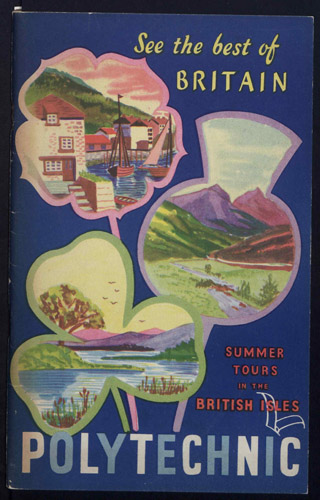 to become Lunn Poly (later Thomson Holidays).
to become Lunn Poly (later Thomson Holidays).
The records of the Polytechnic Touring Association, held at the University of Westminster, provide a fascinating case study for an organisation which began as a philanthropic exercise, but quickly grew to become a serious and highly successful player in the competitive tourism market in the UK. Highlights include:
- Promotional tourist films advertising P.T.A. excursions such as Paris Holiday (c.1950)
- Photographs and pamphlets of the first escorted tour by air to Switzerland, arranged by the Polytechnic Touring Association on 14 May 1932
- Accounts and balance sheets (1895-1912) showing the breakdown of each country visited by the Association and the costs involved in each excursion. The reports also list the names of conductors and a breakdown of their expenditure, allowing the growth of the organisation to be mapped.
- Holiday brochures and guidebooks, c.1920-1950. These would have been purchased by P.T.A. customers as a souvenir of their holiday, but also as a detailed guide to use throughout the journey. Each guidebook describes the route and itinerary of the tour, with added details about the history and nature of each destination visited along the way.



